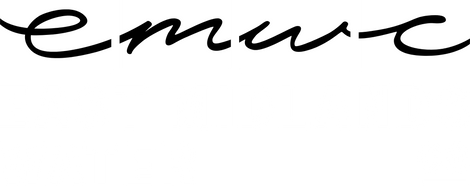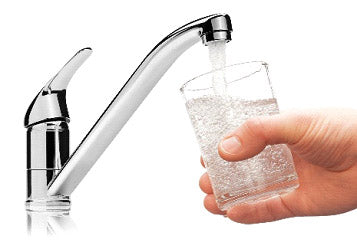HOW CLEAN IS YOUR DRINKING WATER?
Being able to draw a glass of drinking water from a tap in the house is something that most of us will take for granted. It’s a simple process, its easy and doesn’t need a great deal of effort; just a clean receptacle to put the water in and away you go.
Its not always been that simple though and in many countries, to get access to clean drinking water takes a little more effort and certainly a bit of planning. This is not limited to what we think of third world countries either. Think about when you go on holiday, even to Europe, and are advised not to drink the water that comes from the tap. We are encouraged to buy bottled water in order to ensure that we don’t become ill whilst we are away. Most people will heed this advice, not wanting to spoil what will most likely be something that has been looked forward to for some time.
Even in the UK, as recently as the 19th century, the general public did not have access to a personal supply of clean water. At the very most there would be a standpipe in a local street where water would need to be collected and carried home for the daily needs of the family.
Things all came to a head in the mid 1800’s when the population of London suffered from numerous cholera outbreaks that claimed many lives. The problem being that there was no sewage system; most of the City’s human excrement was ending up in the Thames - the very place where the City’s drinking water was coming from. It wasn’t until the construction of a proper sewage system (most of which is still in use today) and the filtration of drinking water that things began to improve
The Metropolis Water Act of 1852 was an Act of Parliament which introduced regulation of water supply companies in London and introduced minimum standards of water quality for the very first time. The purpose of the act was to “make provision for securing the supply to the Metropolis (London) of pure and wholesome water”. The Act ensured that it was no longer lawful to extract water from the tidal reaches of the river Thames and that all water supplied had to be effectively filtered.
The start of the filtered water revolution!
So how clean is our drinking water now? You might be surprised to learn that much of the water that flows through our municipal network of water pipes on its way to our houses has been ‘used’ many times before. Even in the UK, water is regarded as a finite resource and as such needs to be treated carefully. For many years now, water that is taken from our roads, soakaways and even from households is ‘recycled’. We are not consuming pure rainwater or water that has come from a natural source when we open our kitchen tap for a glass of water.
It is widely understood that there is not a water molecule on the plant that hasn’t passed through a living organism, at least once! Water from rivers tends to have been through more bodies than rainwater, because it is concentrated by being in a channel. In a highly populated area such as the Thames valley, water will have been through bodies several times by the time it is reused. This accounts for female hormones from birth control pills being detectable in London water; a phenomenon that is not exclusive to London, either.
Our drinking water is treated to enable it to meet the requirements of the Drinking Water Inspectorate which was formed in 1990 to give independent reassurance that the many water companies around the UK are supplying water to correct minimum levels. However, and it’s a big however, the minimum requirements for the quality of our water are very much subjective.
Back in the 19th century, richer households were choosing to filter their water because of impurities that were found in it. These simple filters were a combination of sand grains and carbon, filtering the water in stages in order to be able to ensure that water that was poured into the top of the filter, was a little purer than the water that was extracted from the tap at the bottom of the filter
So what is in our water now?
In the UK, our drinking water is treated to kill harmful bacteria and to keep water germ free on its journey to our taps. The use of chlorine is the most common method of disinfection but it can react with certain naturally occurring organic compounds.
It is a legal requirement that our drinking water is monitored for these dangerous compounds so the chances of consuming any harmful substances is extremely small. However, it does impart a very strong chemical taste and smell which can be unpleasant. In addition, the closer a property is to the water treatment plant, the more likely that chlorine (both smell and taste) can be detected in the water.
Limescale is made up from calcium and magnesium carbonate formed when hard water is heated. Water hardness does vary greatly across the UK, with hard water areas seeing greater issues with limescale build up on kettles, coffee machines and taps. Limescale looks unsightly but also affects the efficiency of heating elements in boilers and kettles.
Fluoride can occur naturally and there are maximum levels allowed in mains water, although in some regions, fluoride is added to municipal water supplies. The addition of fluoride was introduced in order to protect our teeth. However, an excess of fluoride has a detrimental effect on teeth and when added to products such as toothpaste, it becomes difficult to calculate what is a safe level of fluoride exposure. Overdosing on fluoride has also been linked to bone problems, acne, early puberty, heart problems and high blood pressure. Because the jury is out on the addition of fluoride, there has been no new mains water fluoridation programmes in the UK for some time.
Lead is highly poisonous and can be absorbed into water from old lead piping. Soft water areas are more at risk from lead problems as limescale build up can act as a barrier between pipes and the water which help protect it from contamination.
Microplastics have been found to contaminate tap water samples in the EU, including the UK. The source of microplastics are many and varied; synthetic fibres, paint, cosmetics, tyres – the list is endless. We might think that the deliberate contamination of water with plastic based products is the major contributor to this growing problem but even just washing clothes made from man made fibres releases thousands of fibres into the washing water, which then start on cyclical journey in our water chain. The discovery of microplastics and the resultant health risks is a new topic but one that scientists are keen to investigate. Equally worrying is that microplastics are known to absorb toxic chemicals.
What might be in our water …. (but really shouldn’t be)
Harmful bacteria
Parasites
Synthetic hormones
Drugs
There are several options that we can undertake in order to ensure that our drinking water quality is improved.

Jug filters
Quite simply a jug system where tap water runs through a carbon filter and then stored in a jug until required. Jug filters can help remove the many elements that give our drinking water its distinctive taste or smell and can even reduce PH levels making the very worst of water more palatable. However, filter jug systems are only as good as the filter that is in use.
Filters need replacing on a regular basis and are quite expensive. Jug filters take up countertop space and fridge space.
If you have a large household with lots of people (and animals) demanding filtered drinking water, you may need more than one jug filter.

At source water filters
There are many types of water filters on the market.
You can choose from a filter that will attach to your tap and last a couple of months or one that is installed as part of your plumbing set up and have a much longer life.
These filters will vary in quality in the way that they process tap water.
Efficiency and effectiveness will depend on the type and the quality of the media within the filter that is used and the way that it is constructed.
East Midlands Water Company produce a Highly Efficient System 40 Three Year, 40,000 litre capacity filtration system, Ours and possibly the worlds most eco friendly filtration system.

